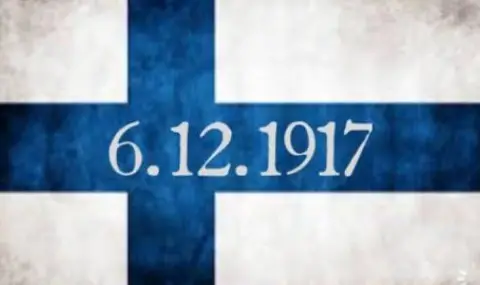On December 6, 1917, shortly after the October Revolution in Russia, Finland declared its independence. It is recognized by the Russian government of Vladimir Lenin.
This became possible partly as a result of the First World War and partly due to the fact that society matured to the idea of independence after the fall of the monarchy in 1917.
After 600 years of Finland being part of the Swedish state, in 1809 after the Napoleonic Wars, the country passed into the hands of the Russian Empire.
Finland receives the status of a Grand Russian Principality with its own administrative and judicial bodies, the Embassy of Finland recalls.
The quest for independence arose naturally after the rise of nationalism in the second half of the 19th century. The ideologist of this movement is Johann Willem Snellman, a professor at the University of Helsinki and himself a student of the German philosopher Hegel. Snellman urges the Finnish people to assert their linguistic and cultural identity.
The idea of an independent Finland gained wider popularity in the second half of the 19th century. and reached its peak with the threatening approach of the First World War at the beginning of the 20th century.
The independence movement became increasingly active during the war and especially after the declaration of November 1914, which deprived Finland of fundamental rights: the government was “Russified” and steps are taken to suppress nascent Finnish nationalism.
Dethronement of the Russian Tsar in 1917. and the October Revolution are the two events that encouraged the so-called called An independent Senate, led by Per Evind Svinhuvud, to propose to the parliament that Finland declare its independence and that the new sovereign state be given the status of a republic. The proposal was approved by Parliament on December 6, 1917.
On December 31, 1917 at the insistence of the Senate, Lenin's government officially recognized the new state, followed by France, Sweden, Germany, Austria-Hungary, Greece, Denmark and Norway, and a year and a half later by the USA and Great Britain.
National celebrations of Finland's Independence Day begin with the raising of the flag at Takhtitorni Hill in Helsinki, followed by a solemn mass in Helsinki Cathedral, which is traditionally attended by the President of the Republic.
On Independence Day, the army organizes a military parade, the Finnish flag is flown everywhere and two candles, colored white and blue, are traditionally lit in every home.
